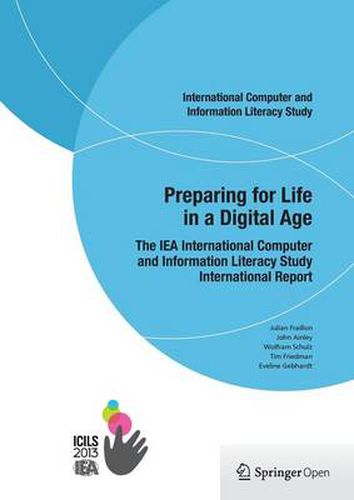Readings Newsletter
Become a Readings Member to make your shopping experience even easier.
Sign in or sign up for free!
You’re not far away from qualifying for FREE standard shipping within Australia
You’ve qualified for FREE standard shipping within Australia
The cart is loading…






This title is printed to order. This book may have been self-published. If so, we cannot guarantee the quality of the content. In the main most books will have gone through the editing process however some may not. We therefore suggest that you be aware of this before ordering this book. If in doubt check either the author or publisher’s details as we are unable to accept any returns unless they are faulty. Please contact us if you have any questions.
Ability to use information and communication technologies (ICT) is an imperative for effective participation in today’s digital age. Schools worldwide are responding to the need to provide young people with that ability. But how effective are they in this regard? The IEA International Computer and Information Literacy Study (ICILS) responded to this question by studying the extent to which young people have developed computer and information literacy (CIL), which is defined as the ability to use computers to investigate, create and communicate with others at home, school, the workplace and in society.
The study was conducted under the auspices of the International Association for the Evaluation of Educational Achievement (IEA) and builds on a series of earlier IEA studies focusing on ICT in education.
Data were gathered from almost 60,000 Grade 8 students in more than 3,300 schools from 21 education systems. This information was augmented by data from almost 35,000 teachers in those schools and by contextual data collected from school ICT-coordinators, school principals and the ICILS national research centers.
The IEA ICILS team systematically investigated differences among the participating countries in students’ CIL outcomes, how participating countries were providing CIL-related education and how confident teachers were in using ICT in their pedagogical practice. The team also explored differences within and across countries with respect to relationships between CIL education outcomes and student characteristics and school contexts.
In general, the study findings presented in this international report challenge the notion of young people as digital natives with a self-developed capacity to use digital technology. The large variations in CIL proficiency within and across the ICILS countries suggest it is naive to expect young people to develop CIL in the absence of coherent learning programs. Findings also indicate that system- and school-level planning needs to focus on increasing teacher expertise in using ICT for pedagogical purposes if such programs are to have the desired effect.
The report furthermore presents an empirically derived scale and description of CIL learning that educational stakeholders can reference when deliberating about CIL education and use to monitor change in CIL over time.
$9.00 standard shipping within Australia
FREE standard shipping within Australia for orders over $100.00
Express & International shipping calculated at checkout
This title is printed to order. This book may have been self-published. If so, we cannot guarantee the quality of the content. In the main most books will have gone through the editing process however some may not. We therefore suggest that you be aware of this before ordering this book. If in doubt check either the author or publisher’s details as we are unable to accept any returns unless they are faulty. Please contact us if you have any questions.
Ability to use information and communication technologies (ICT) is an imperative for effective participation in today’s digital age. Schools worldwide are responding to the need to provide young people with that ability. But how effective are they in this regard? The IEA International Computer and Information Literacy Study (ICILS) responded to this question by studying the extent to which young people have developed computer and information literacy (CIL), which is defined as the ability to use computers to investigate, create and communicate with others at home, school, the workplace and in society.
The study was conducted under the auspices of the International Association for the Evaluation of Educational Achievement (IEA) and builds on a series of earlier IEA studies focusing on ICT in education.
Data were gathered from almost 60,000 Grade 8 students in more than 3,300 schools from 21 education systems. This information was augmented by data from almost 35,000 teachers in those schools and by contextual data collected from school ICT-coordinators, school principals and the ICILS national research centers.
The IEA ICILS team systematically investigated differences among the participating countries in students’ CIL outcomes, how participating countries were providing CIL-related education and how confident teachers were in using ICT in their pedagogical practice. The team also explored differences within and across countries with respect to relationships between CIL education outcomes and student characteristics and school contexts.
In general, the study findings presented in this international report challenge the notion of young people as digital natives with a self-developed capacity to use digital technology. The large variations in CIL proficiency within and across the ICILS countries suggest it is naive to expect young people to develop CIL in the absence of coherent learning programs. Findings also indicate that system- and school-level planning needs to focus on increasing teacher expertise in using ICT for pedagogical purposes if such programs are to have the desired effect.
The report furthermore presents an empirically derived scale and description of CIL learning that educational stakeholders can reference when deliberating about CIL education and use to monitor change in CIL over time.